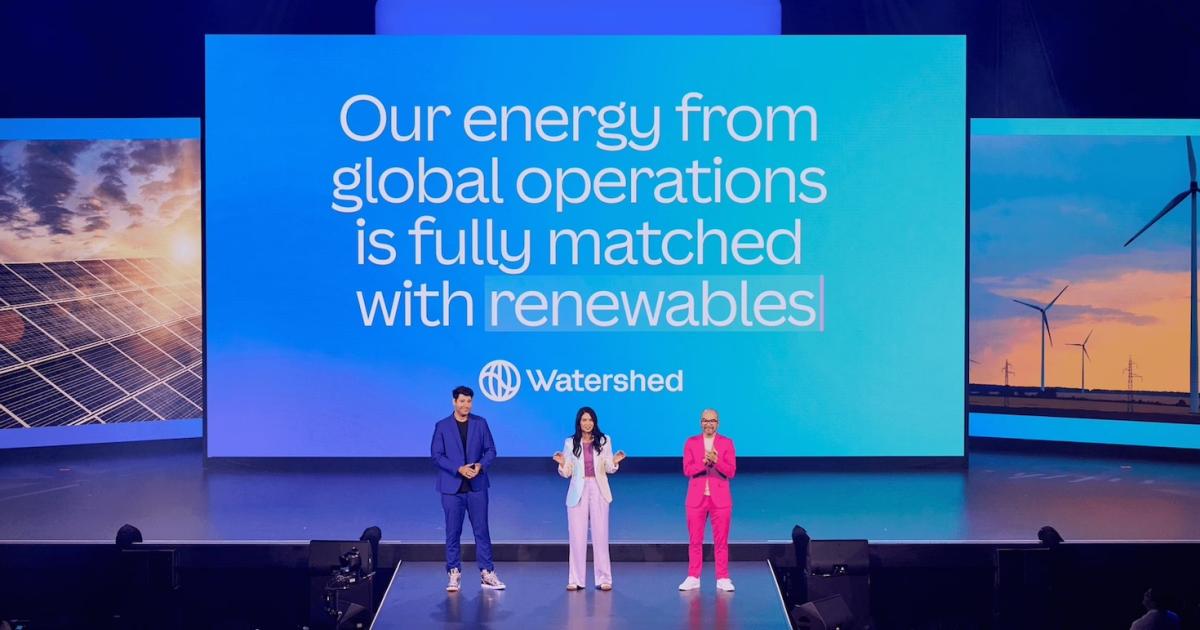
Graphics software company Canva has signed a unique solar energy procurement contract with sustainability services firm Watershed that will help its largest printing suppliers reduce their emissions.
The virtual power purchase agreement, cofunded by Canva and its printers, will support the construction of new community solar projects in Illinois, a fast-growing state for renewable energy development.
The deal will help Canva cut Scope 3 emissions from its supply chain. At the same time, the companies behind Canva Print — which lets users produce books and posters from their Canva designs — can claim cuts to their Scope 2 emissions, which include those generated by their electricity usage.
The companies won’t actually use the power in their own operations, however. “What they are doing is matching the electricity emissions that they produce because of Canva,” said Matt Konieczny, head of clean power at Watershed. The collective amount the companies will claim initially is 40,000 megawatt-hours annually, he said. Excess electricity from the projects will be sold to local utilities so they can fund solar power for renters and low-income households that don’t traditionally have access to renewable energy.
What makes the Canva-Watershed contract unique
Canva was the first Australian company to join The Climate Pledge, which commits the company to reach net-zero by 2040. The company claimed carbon neutrality in 2020, made possible through waste reduction and purchases of carbon and renewable energy credits. In January 2023, it signed up to Frontier, a group of companies including JPMorgan, Meta and Stripe making advance purchases of early-stage carbon removal technologies.
But Canva’s fast growth makes reducing its Scope 3 emissions challenging. The company has about 185 million monthly users and $2 billion in revenues. That motivated discussions about a year ago, said Mike Williams, global head of sustainability at Canva. “Print is an area that will continue to grow, which means our footprint will, as well,” Williams said.
The deal, announced in late May, is novel for four reasons:
- It’s relatively modest. Canva and its suppliers need to cover a much smaller load than is normally covered by virtual power purchase agreements. Typically, companies using less than 50,000 megawatt-hours annually have found it difficult to negotiate deals.
- It has a fixed price. Watershed will assume the risk for cost fluctuations as the price of power changes with demand. “We made sure the price point was palatable for their suppliers,” said Konieczny.
- The terms are relatively short. Canva and its suppliers are on the hook for five to seven years, rather than the 12 to 20 years often associated with larger projects.
- The projects will have a demonstrable impact. Solar power accounts for just 4.2 percent of power on the Midcontinent Independent System Operator grid. That was a big factor in the location choice, according to Watershed and Canva. “We wouldn’t have had an opportunity in another situation to be part of bringing clean energy into the world,” said Suzy Cummins, regional general manager for RPI Print, which is part of the contract.
‘We don’t have many other ways to offset that don’t feel like greenwashing’
Canva’s largest print suppliers — RPI Print, Taylor, Blooming Color, Brook & Whittle, and Digital on Demand — are all participating in the agreement. “The pleasant reality is that all these partners share the interest and motivations,” Williams said. “They just needed to know how.”
“We don’t have many other ways to offset that don’t feel like greenwashing,” RPI’s Cummins said. “We have a lot of customers where sustainability is part of their mission.”
The contract offered a lower hurdle to buying into clean energy, said Rick Hanaway, senior vice president of sales and marketing for RPI Print. “We didn’t have to start from scratch,” he said.
- SEO Powered Content & PR Distribution. Get Amplified Today.
- PlatoData.Network Vertical Generative Ai. Empower Yourself. Access Here.
- PlatoAiStream. Web3 Intelligence. Knowledge Amplified. Access Here.
- PlatoESG. Carbon, CleanTech, Energy, Environment, Solar, Waste Management. Access Here.
- PlatoHealth. Biotech and Clinical Trials Intelligence. Access Here.
- Source: https://www.greenbiz.com/article/how-canva-helping-its-printing-partners-buy-solar-power



